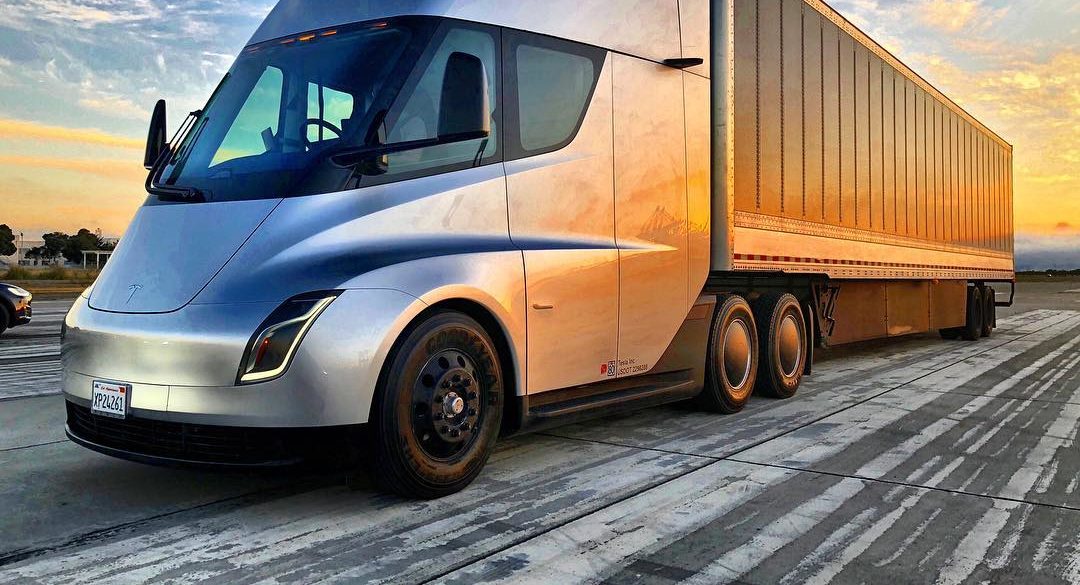
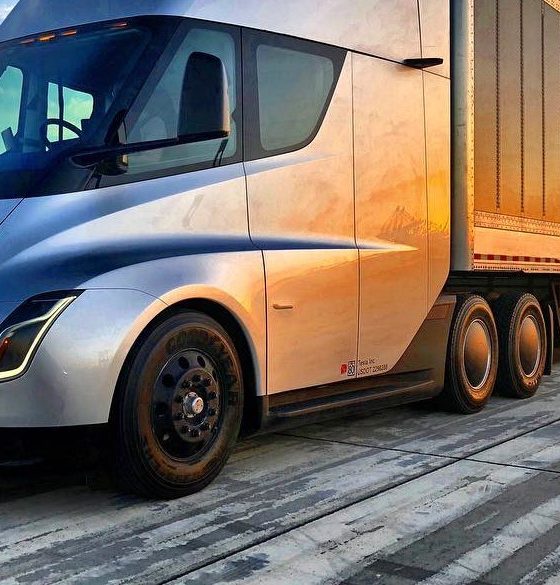
News
Tesla Semi production to ‘earnestly’ begin by 2020
When Elon Musk unveiled the Tesla Semi last November, the bold CEO announced that the all-electric truck would likely start production sometime in 2019. While details for Tesla’s ramp for the Semi are still largely unknown, the company has nonetheless provided an update on the upcoming vehicle’s rollout, stating that the company would begin “earnestly” producing the Semi by 2020.
The update on the Semi’s production was shared by Eric Markowitz & Dan Crowley of Worm Capital, one of Tesla’s investors which currently owns about $200 million worth of TSLA stock. The Worm Capital financial analysts were part of a group who were invited to tour Tesla’s Gigafactory 1 in Nevada last month. Markowitz and Crowley wrote about their insights from the Giga 1 tour in a post on the financial firm’s official website. Among these were information related by Tesla head of investor relations Martin Viecha, who dropped some updates about the company’s products and its plans for the near future.
For one, the Tesla head of investor relations reportedly noted that the company is aiming to start exporting the Model 3 to other countries sometime next year. What’s more, Veicha also noted that Tesla is planning on “earnestly” producing the Semi by 2020.
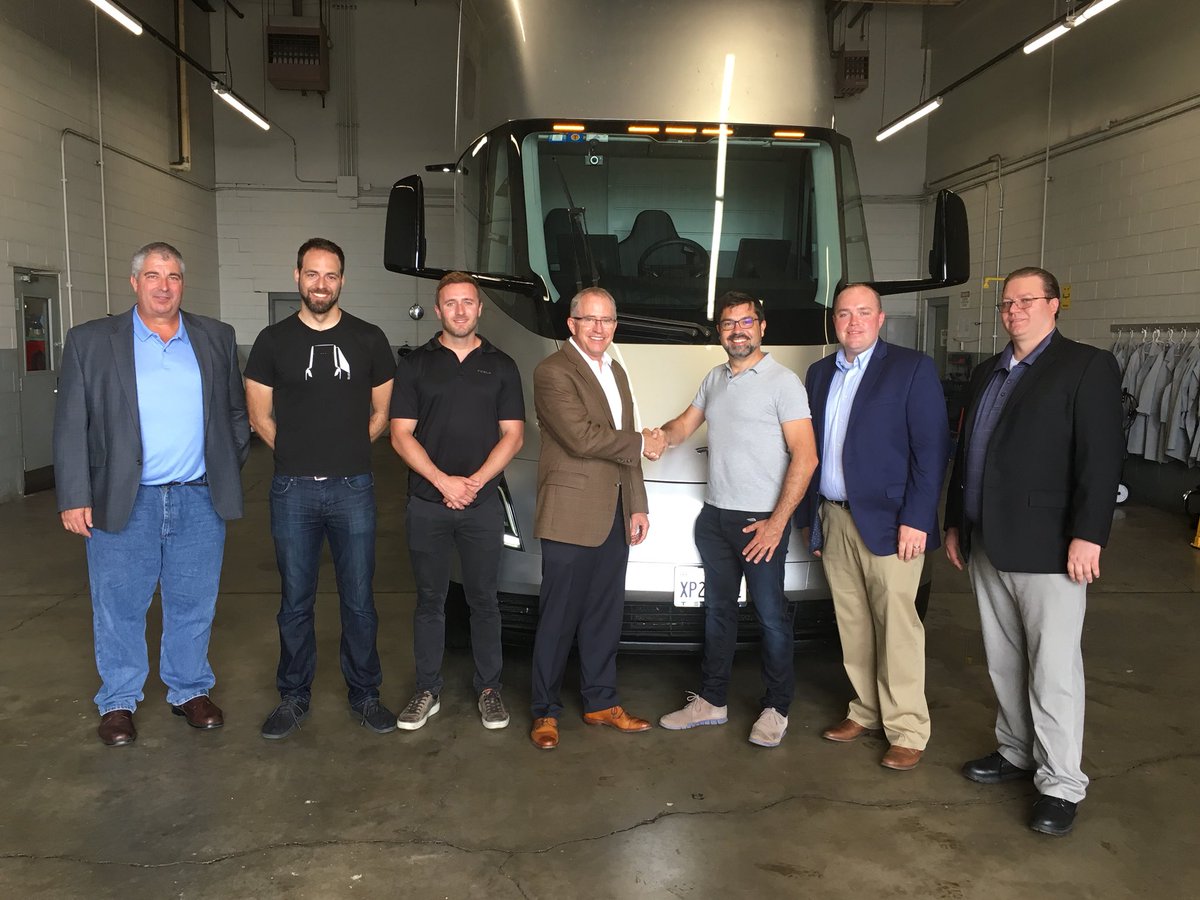
The update on the Semi’s production appears to suggest that Tesla is, for the most part, keeping its original target for the long-hauler’s initial rollout. Musk’s 2019 estimate for the start of the Semi’s production is undoubtedly aggressive and optimistic, but if Tesla intends to hit its stride with the Semi’s production by 2020, the company would probably need to start manufacturing the first electric trucks either in 2019 (within Musk’s original target), or early 2020 (if the vehicle’s rollout ends up happening in Tesla’s ever-prevalent ‘Elon Time’).
Tesla’s goal for the Semi is actually quite feasible, considering that the vehicle shares several components with the Model 3. This was confirmed during the Q2 2018 earnings call, when the company noted that the two vehicles share parts such as powertrains, door handles, and touchscreens, to name a few. On account of these similarities, as well as the manufacturing lessons Tesla learned during the Model 3 ramp, there is a pretty good chance that the Semi’s production would not see as many difficulties as the electric sedan’s.
In true Tesla fashion, the Semi boasts strong performance figures, thanks to its four Model 3-derived electric motors that enable the long-hauler to sprint from 0-60 mph in just 5 seconds without cargo. The Semi is also classified as a Class 8 vehicle, allowing it to transport the maximum amount of load usually permitted on US highways. Furthermore, the electric truck will be capable of operating in “Convoy Mode,” a system that will enable several Semis to semi-autonomously draft in close proximity with each other to reduce energy usage from wind resistance.
Tesla is currently continuing real-world tests of the Semi, with the long-hauler’s prototype being sighted traveling across the United States. Over the past few weeks, the Semi has visited some of the company’s reservation holders such as J.B. Hunt, UPS, and Ruan Transport Management Systems. Through interactions with the engineers accompanying the Semi across its interstate travels, some members of the Tesla community have been able to acquire some compelling tidbits of information about the prototype long-hauler, such as its 26-camera system, its carbon fiber body, and its upcoming sleeper features.

Elon Musk
Tesla CEO Elon Musk sends rivals dire warning about Full Self-Driving
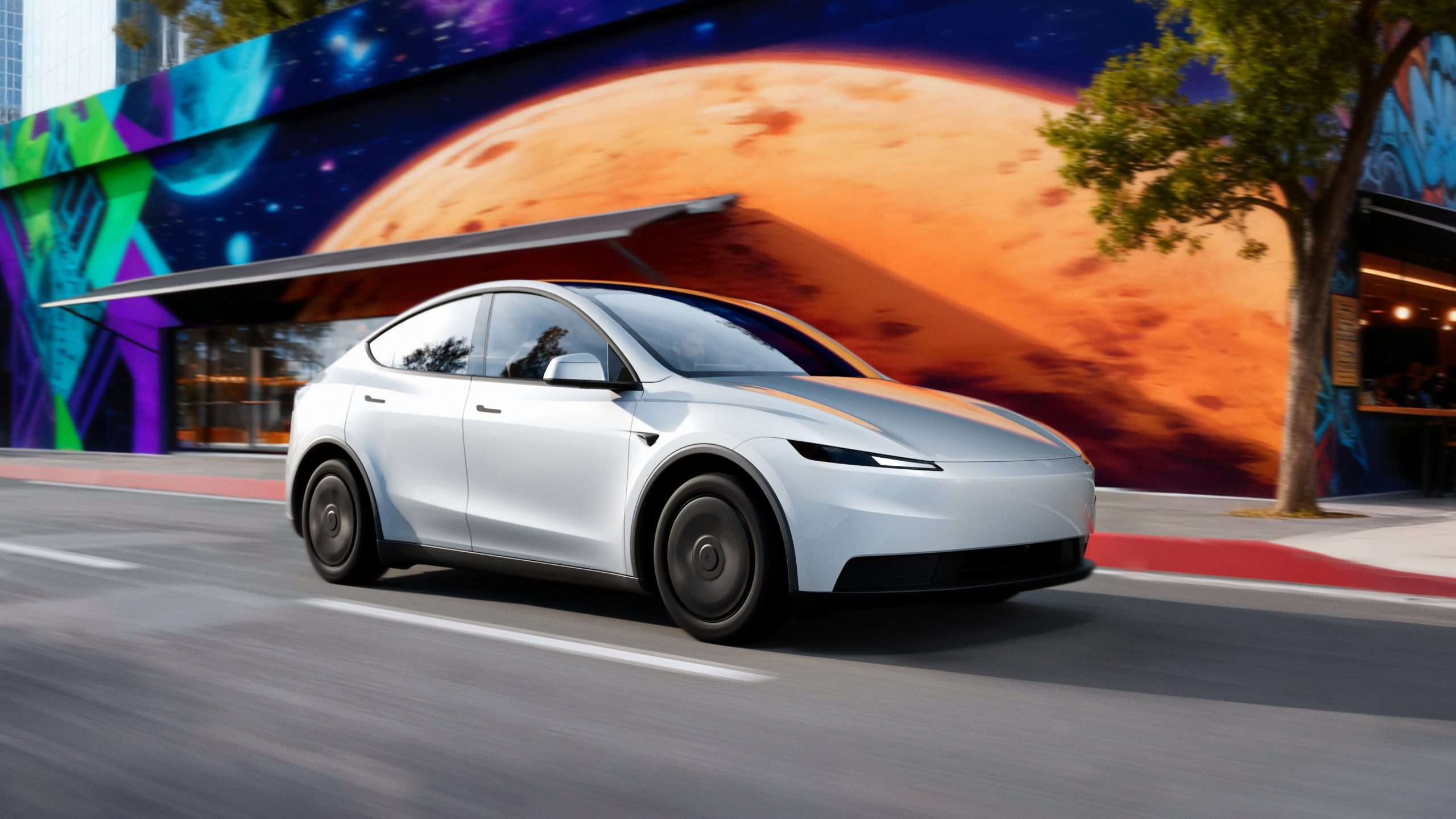
Tesla CEO Elon Musk revealed today on the social media platform X that legacy automakers, such as Ford, General Motors, and Stellantis, do not want to license the company’s Full Self-Driving suite, at least not without a long list of their own terms.
“I’ve tried to warn them and even offered to license Tesla FSD, but they don’t want it! Crazy,” Musk said on X. “When legacy auto does occasionally reach out, they tepidly discuss implementing FSD for a tiny program in 5 years with unworkable requirements for Tesla, so pointless.”
I’ve tried to warn them and even offered to license Tesla FSD, but they don’t want it! Crazy …
When legacy auto does occasionally reach out, they tepidly discuss implementing FSD for a tiny program in 5 years with unworkable requirements for Tesla, so pointless. 🤷♂️
🦕 🦕
— Elon Musk (@elonmusk) November 24, 2025
Musk made the remark in response to a note we wrote about earlier today from Melius Research, in which analyst Rob Wertheimer said, “Our point is not that Tesla is at risk, it’s that everybody else is,” in terms of autonomy and self-driving development.
Wertheimer believes there are hundreds of billions of dollars in value headed toward Tesla’s way because of its prowess with FSD.
A few years ago, Musk first remarked that Tesla was in early talks with one legacy automaker regarding licensing Full Self-Driving for its vehicles. Tesla never confirmed which company it was, but given Musk’s ongoing talks with Ford CEO Jim Farley at the time, it seemed the Detroit-based automaker was the likely suspect.
Tesla’s Elon Musk reiterates FSD licensing offer for other automakers
Ford has been perhaps the most aggressive legacy automaker in terms of its EV efforts, but it recently scaled back its electric offensive due to profitability issues and weak demand. It simply was not making enough vehicles, nor selling the volume needed to turn a profit.
Musk truly believes that many of the companies that turn their backs on FSD now will suffer in the future, especially considering the increased chance it could be a parallel to what has happened with EV efforts for many of these companies.
Unfortunately, they got started too late and are now playing catch-up with Tesla, XPeng, BYD, and the other dominating forces in EVs across the globe.
News
Tesla backtracks on strange Nav feature after numerous complaints

Tesla is backtracking on a strange adjustment it made to its in-car Navigation feature after numerous complaints from owners convinced the company to make a change.
Tesla’s in-car Navigation is catered to its vehicles, as it routes Supercharging stops and preps your vehicle for charging with preconditioning. It is also very intuitive, and features other things like weather radar and a detailed map outlining points of interest.
However, a recent change to the Navigation by Tesla did not go unnoticed, and owners were really upset about it.
For trips that required multiple Supercharger stops, Tesla decided to implement a naming change, which did not show the city or state of each charging stop. Instead, it just showed the business where the Supercharger was located, giving many owners an unwelcome surprise.
However, Tesla’s Director of Supercharging, Max de Zegher, admitted the update was a “big mistake on our end,” and made a change that rolled out within 24 hours:
The naming change should have happened at once, instead of in 2 sequential steps. That was a big miss on our end. We do listen to the community and we do course-correct fast. The accelerated fix rolled out last night. The Tesla App is updated and most in-car touchscreens should…
— Max (@MdeZegher) November 20, 2025
The lack of a name for the city where a Supercharging stop would be made caused some confusion for owners in the short term. Some drivers argued that it was more difficult to make stops at some familiar locations that were special to them. Others were not too keen on not knowing where they were going to be along their trip.
Tesla was quick to scramble to resolve this issue, and it did a great job of rolling it out in an expedited manner, as de Zegher said that most in-car touch screens would notice the fix within one day of the change being rolled out.
Additionally, there will be even more improvements in December, as Tesla plans to show the common name/amenity below the site name as well, which will give people a better idea of what to expect when they arrive at a Supercharger.
News
Dutch regulator RDW confirms Tesla FSD February 2026 target
The regulator emphasized that safety, not public pressure, will decide whether FSD receives authorization for use in Europe.
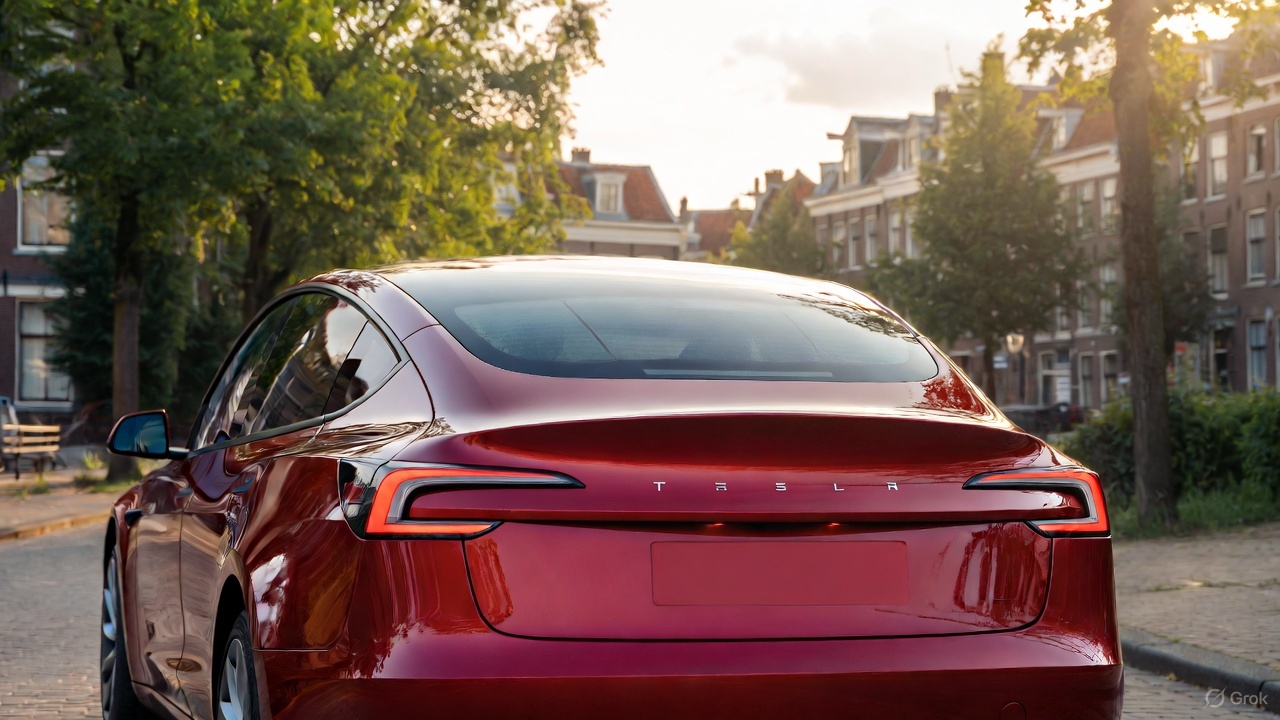
The Dutch vehicle authority RDW responded to Tesla’s recent updates about its efforts to bring Full Self-Driving (Supervised) in Europe, confirming that February 2026 remains the target month for Tesla to demonstrate regulatory compliance.
While acknowledging the tentative schedule with Tesla, the regulator emphasized that safety, not public pressure, will decide whether FSD receives authorization for use in Europe.
RDW confirms 2026 target, warns Feb 2026 timeline is not guaranteed
In its response, which was posted on its official website, the RDW clarified that it does not disclose details about ongoing manufacturer applications due to competitive sensitivity. However, the agency confirmed that both parties have agreed on a February 2026 window during which Tesla is expected to show that FSD (Supervised) can meet required safety and compliance standards. Whether Tesla can satisfy those conditions within the timeline “remains to be seen,” RDW added.
RDW also directly addressed Tesla’s social media request encouraging drivers to contact the regulator to express support. While thanking those who already reached out, RDW asked the public to stop contacting them, noting these messages burden customer-service resources and have no influence on the approval process.
“In the message on X, Tesla calls on Tesla drivers to thank the RDW and to express their enthusiasm about this planning to us by contacting us. We thank everyone who has already done so, and would like to ask everyone not to contact us about this. It takes up unnecessary time for our customer service. Moreover, this will have no influence on whether or not the planning is met,” the RDW wrote.
The RDW shares insights on EU approval requirements
The RDW further outlined how new technology enters the European market when no existing legislation directly covers it. Under EU Regulation 2018/858, a manufacturer may seek an exemption for unregulated features such as advanced driver assistance systems. The process requires a Member State, in this case the Netherlands, to submit a formal request to the European Commission on the manufacturer’s behalf.
Approval then moves to a committee vote. A majority in favor would grant EU-wide authorization, allowing the technology across all Member States. If the vote fails, the exemption is valid only within the Netherlands, and individual countries must decide whether to accept it independently.
Before any exemption request can be filed, Tesla must complete a comprehensive type-approval process with the RDW, including controlled on-road testing. Provided that FSD Supervised passes these regulatory evaluations, the exemption could be submitted for broader EU consideration.








